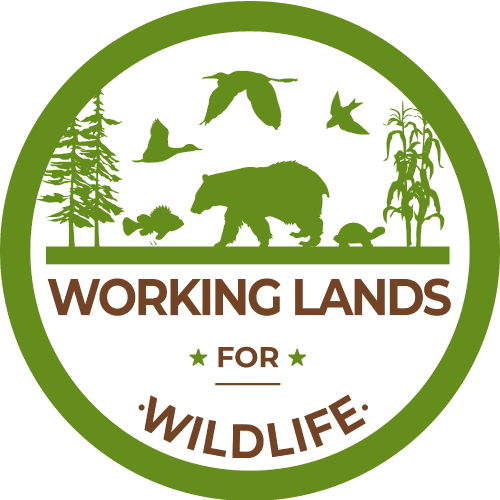-
 Northern Bobwhites and Fire: A Perfect Match
Northern Bobwhites and Fire: A Perfect Match
-
by
Rhishja Cota
—
published
Dec 30, 2020
—
last modified
Dec 12, 2023 08:45 PM
—
filed under:
WLFW,
Fire,
Forests,
Prescribed Burn,
Video,
Wildland Fire,
News
Prescribed fire, bobwhite ecology, and local site conditions need to be aligned for optimal bobwhite population response. This course discusses the context of fire frequency, scale, and seasonality for bobwhite management and restoration.
Located in
Training
/
Videos, podcasts, multimedia
/
Videos
-
Introduction to Diversity, Equity, and Inclusion in Conservation
-
by
Rhishja Cota
—
published
Apr 24, 2023
—
last modified
Mar 17, 2025 12:09 PM
—
filed under:
Equity and Inclusion,
Online Course,
Conservation,
Diversity,
E&I
Diversity, equity, and inclusion are essential to achieving our mission of protecting essential ecosystem services, creating sustainable working lands, and enhancing biodiversity. This course is an introduction to the podcast "Ted Takeaways" and how we can work together to address landscape-level issues and promote sustainable working lands with an eye towards equity and inclusion.
Located in
Learning & Tech Transfer
/
Training Resources
/
Inbox
-
Growing-Season Prescribed Fires and Ground-Nesting Birds: Answers for Longleaf Restoration
-
by
Rhishja Cota
—
published
Apr 24, 2023
—
last modified
Apr 11, 2024 07:31 PM
—
filed under:
WLFW,
WLFW Training Resources,
Wildland Fire,
Prescribed Burn,
Landscape Conservation,
Birds
This presentation will look at the science behind the use of fire during the "lightning season" (the months of April – July) and its effects on ground-nesting birds such as quail and Bachman’s sparrow.
Located in
Learning & Tech Transfer
/
Training Resources
/
Inbox
-
Gopher tortoises in Southern states deserve federal protections, groups say
-
by
Rhishja Cota
—
published
Mar 28, 2023
—
last modified
Nov 03, 2023 09:33 PM
—
filed under:
WLFW,
Habitat loss,
Gopher Tortoise,
Endangered Species,
Center for Biological Diversity,
Endangered Species Act,
News,
Working Lands for Wildlife,
Longleaf Pine
ST. PETERSBURG, Fla. — Gopher tortoises imperiled by loss of habitat largely caused by human development should be placed on the endangered species list in four southern states, environmental groups said Wednesday as they prepared to sue the federal government over the issue.
Located in
News & Announcements
/
WLFW News Inbox
-
Northern Bobwhites and Fire: A Perfect Match
-
by
Rhishja Cota
—
published
May 04, 2022
—
last modified
Apr 21, 2023 01:49 PM
—
filed under:
Training Resources,
WLFW,
Fire,
Webinars and Instructional Videos,
Northern Bobwhite Quail,
Webinar,
Grasslands and Savannas,
Working Lands for Wildlife,
Northern bobwhite
Prescribed fire, bobwhite ecology, and local site conditions need to be aligned for optimal bobwhite population response. This course discusses the context of fire frequency, scale, and seasonality for bobwhite management and restoration.
Located in
Training Resources
/
Webinars and Instructional Videos
-
Podcast: Native Warm Season Grass Episode 7 – Steve Clubine
-
by
Rhishja Cota
—
published
Mar 29, 2023
—
last modified
Apr 25, 2023 06:28 PM
—
filed under:
Training Resources,
WLFW,
Grasslands,
Northern Bobwhite Quail,
Podcasts,
native warm season grasses,
Grasslands and Savannas,
Working Lands for Wildlife,
Podcast,
Grazing
Steve Clubine, producer from West-central Missouri and retired grassland biologist discusses starting out with a grazing system and animal performance.
Located in
Training Resources
-
Podcast: Native Warm Season Grass Episode 8 – Dr. Pat Keyser
-
by
Rhishja Cota
—
published
Mar 29, 2023
—
last modified
Apr 25, 2023 06:26 PM
—
filed under:
Training Resources,
WLFW,
Grasslands,
Northern Bobwhite Quail,
Podcasts,
Foraging,
native warm season grasses,
Grasslands and Savannas,
Working Lands for Wildlife,
Podcast,
Grazing
Dr. Pat Keyser, Director of the Center for Native Grasslands Management shares his 40+ year knowledge about establishing native warm-season forages.
Located in
Training Resources
-
 American Black Duck Decision Support Tool
American Black Duck Decision Support Tool
-
by
Rhishja Cota
—
published
Nov 09, 2022
—
last modified
Jul 26, 2023 12:14 PM
—
filed under:
Additional Resources,
American Black Duck,
Decision Support Tools,
Climate Change,
American Black Duck Additional Resources,
Watersheds,
Black Duck,
Research,
Urbanization,
Peer-reviewed Science,
Waterfowl,
Migration,
Aquatics,
Products,
Birds,
Resources,
Salt marshes
The Atlantic Coast Joint Venture Black Duck Decision Support Tool (DST) helps to identify the exact number of acres to protect, restore or maintain at the small watershed scale. Through this tool, land managers can determine the best way to contribute to achieving black duck goals anywhere on the landscape.
Located in
Information Materials
/
Research
/
Peer-reviewed Science
-
 The Effects of Livestock Grazing on the Bog Turtle
The Effects of Livestock Grazing on the Bog Turtle
-
by
Rhishja Cota
—
published
Nov 08, 2022
—
last modified
Jul 24, 2023 11:27 AM
—
filed under:
Reptile,
Additional Resources,
Livestock,
Habitat loss,
Bog Turtle,
Product,
Research,
Peer-reviewed Science,
Aquatics,
Bog Turtle Additional Resources,
Grazing,
Resources
The demise of small-scale dairy farming over the past three decades has led to the pastoral abandonment of the majority of bog turtle habitats in the Northeast. As a consequence, habitats are being degraded by the growth of invasive flora, changes in hydrology, and the loss of turtle microhabitats created by livestock.
Located in
Information Materials
/
Research
/
Peer-reviewed Science
-
 Grazing for Bog Turtle Habitat Management: Case Study of a New York Fen
Grazing for Bog Turtle Habitat Management: Case Study of a New York Fen
-
by
Rhishja Cota
—
published
Nov 08, 2022
—
last modified
Jul 24, 2023 11:28 AM
—
filed under:
Reptile,
Additional Resources,
Livestock,
Bog Turtle,
Aquatics,
Habitat Management,
Product,
Research,
Peer-reviewed Science,
Endangered Species,
Bog Turtle Additional Resources,
Grazing,
Resources
This study presents results from a single wetland complex in New York, USA, which we managed primarily with cattle grazing over four and a half growing seasons. Management effectiveness was assessed by monitoring Bog Turtle nest placement, habitat use via radio tracking, and vegetation structure and composition change in permanent plots.
Located in
Information Materials
/
Research
/
Peer-reviewed Science


